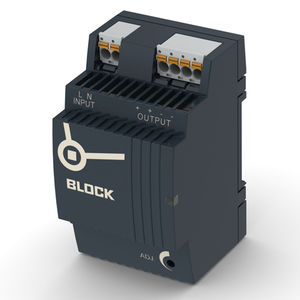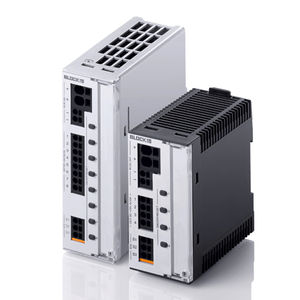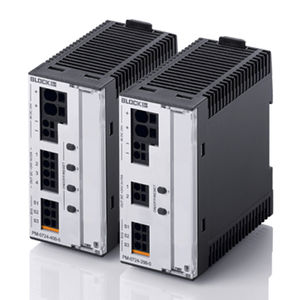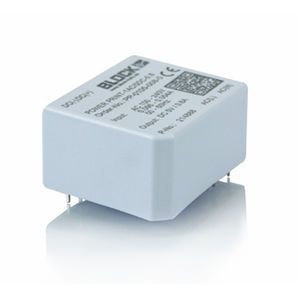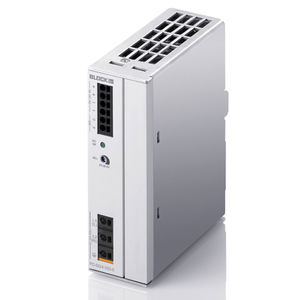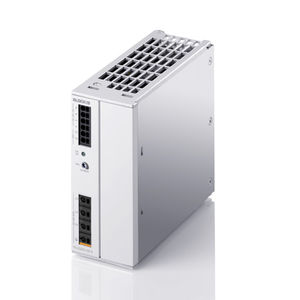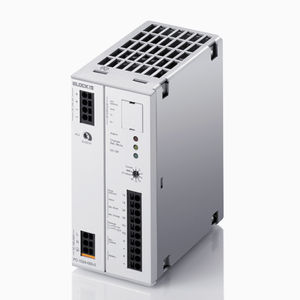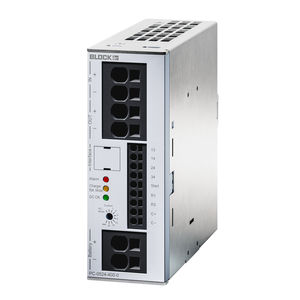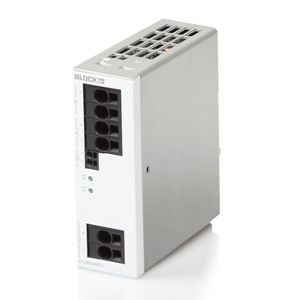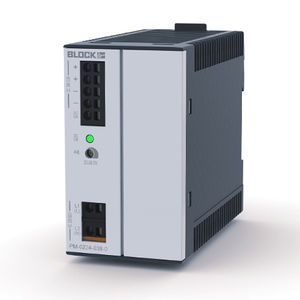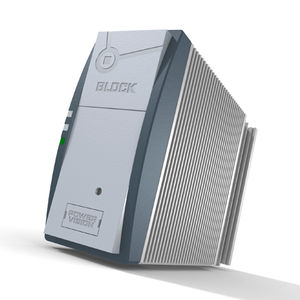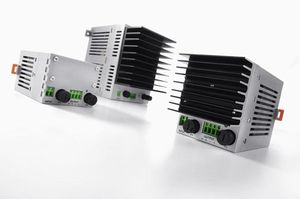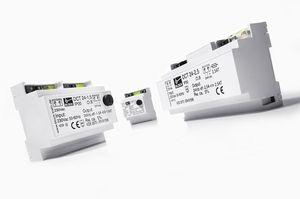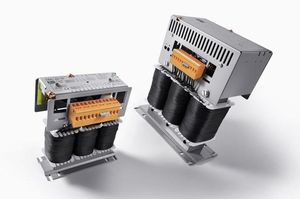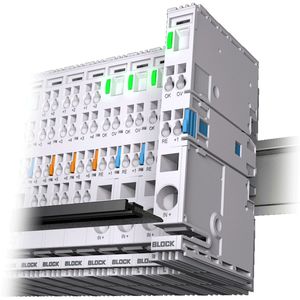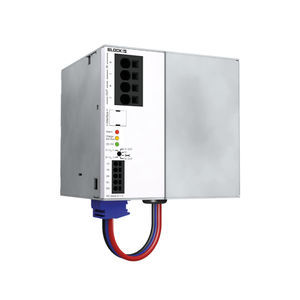
- Electricity - Electronics
- Switch and Relay
- Thermal-magnetic circuit breaker
- Block Transformatoren-Elektronik
Thermal-magnetic circuit breaker BASIC FIXcurrentelectroniccompact
Add to favorites
Compare this product
Characteristics
- Type
- thermal-magnetic
- Electrical characteristics
- current
- Operating mode
- electronic
- Other characteristics
- compact
- VDC
24 V
Description
When it comes to protecting loads at the 24 V level, conventional circuit breakers are steadily losing ground to electronic circuit breakers. Besides tighter tolerances and a more compact design, these offer further advantages that can really add value within a system if used correctly. When teamed with a higher-level control system, electronic circuit breakers support, via a digital input and output, active switching on or off of any output channel, resetting of tripped circuits and simultaneous reporting of current operating and error statuses. BLOCK multichannel circuit breakers only need up 5.25 mm per channel with all 8-channel modules and can be integrated into the overall control and monitoring process.
OVERVIEW
› Reliable switch-on of high capacities (> 50.000 μF)
› Optimum tripping characteristic for any application
› Adjustable tripping current per channel
› Group alarm signal for simple diagnosis
› Sequential and load-dependent switching-on of channels
› Comprehensive single-channel diagnosis
› Remote reset of tripped channels
If circuits are designed with the same current values for the circuit breaker in a number of applications, the Basic Fix circuit breakers represent the most economical basis.
The NEC Class 2 circuit breaker has a selfadjusting current limiting that prevents the output power from exceeding the 100 W limit.
Catalogs
Other Block Transformatoren-Elektronik products
Power supplies
Related Searches
- Circuit breaker
- Current circuit breaker
- Single-pole circuit breaker
- Thermal-magnetic circuit breaker
- DIN rail circuit breaker
- Compact circuit breaker
- DC circuit breaker
- Switching circuit breaker
- Adjustable circuit breaker
- Electronically controlled circuit breaker
- Digital circuit breaker
- Electronic circuit breaker
*Prices are pre-tax. They exclude delivery charges and customs duties and do not include additional charges for installation or activation options. Prices are indicative only and may vary by country, with changes to the cost of raw materials and exchange rates.





